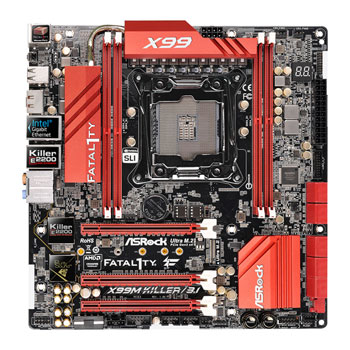- The Killer Control Center installers, contain drivers for the Killer Wireless-AC 1525/1535/1435, Killer E2200, E2205, E2400, and E2500.
- I have pc with GE port n using cat5e cable but when im conected to modem huawei HG8245 its only detect 100mbps when im try manual set to 1.0gbps lan n.
Optimizing E2200/E2400/E2500 Advanced Driver Settings
Some users have asked for optimal advanced settings for their Ethernet adapters. Keep in mind that, in most cases, the default settings for your Ethernet adapter will provide the same results.
These settings can be found in your Device Manager by double-clicking your adapter, then click the Advanced tab.
Keep in mind that these settings assume that your CPU is not overworked when you are gaming or otherwise making heavy use of your network adapter. If this is not the case, it may be advantageous to leave the default settings.

Even after optimizing these settings, you may not see an improvement in performance. For most situations, the default settings provide the same result as optimized settings.
คือทำไม mb รุ่นเกมส์เมอร์มันจะมีกันเกือบหมด เข้าใจ่ว่ามัน.

You may see improved results by setting your advanced settings as such:
ARP Offload: Disabled(When enabled, this offloads some CPU work to the network adapter. Unless your CPU is struggling, this is undesirable)
ECMA: Disabled(Specific Wake-On-LAN technology that can be a potential security issue. Disable unless you know you need it.)
Energy Efficient Ethernet: Disabled(may use slightly more power, but will prevent conflicts with switches, routers, or modems that do not use this feature appropriately)
Flow Control: Disabled (TCP has its own flow control, and this can cause conflicts. UDP usage is rare enough that a dropped packet should not cause any impact.)
Interrupt Moderation: Disabled (Groups packets before sending them. Not desirable for most uses and can cause slowdowns)
IPv4 Checksum Offload: Disabled (When enabled, this offloads some CPU work to the network adapter. Unless your CPU is struggling, this is undesirable)
Jumbo Frame: Disabled (Unless you know you are using the machine as a server with jumbo frame support, this is not desirable.)
Large Send Offload: Disabled (When enabled, this offloads some CPU work to the network adapter. Unless your CPU is struggling, this is undesirable)
Max IRQ per Second: Doesn’t matter.(This is a setting for Interrupt Moderation, and will be ignored if Interrupt Moderation is disabled.)
Maximum Number of RSS Queues: 2 for dual-core CPUs, 4 for quad-core CPUs(This will only increase performance if CPU cores are underutilized when receiving large amounts of data. Unlikely to affect latency.)
Network Address: Not Present. (The Windows Operating System handles this. This setting will not affect NIC performance)
NS Offload: Disabled (When enabled, this offloads some CPU work to the network adapter. Unless your CPU is struggling, this is undesirable)
Receive Buffers: 1024 or experiment. (Increasing this setting will cause your network adapter to use more RAM for processing received data, but may improve performance. Experiment with your specific machine. May not affect latency at all.)
Receive Side Scaling: Enabled(This will allow the NIC to send received data to multiple CPU cores)
Shutdown Wake Up: Disabled.(Only relevant if you intend to use Wake-on-LAN when the machine is shut down. Most BIOSes do not support this. Might cause the computer to wake unexpectedly when enabled.)
Speed & Duplex: Auto-Negotiation(This allows the NIC to operate at 1 Gbps link speeds if the rest of the network negotiates appropriately. Will otherwise revert to 100 Mbps link speed.)
SWOI: Doesn’t Matter (Security Wake On Internet – only relevant for Wake-On-LAN applications over the Internet using compatible technology – does not affect latency.)
TCP Checksum Offload: Disabled (When enabled, this offloads some CPU work to the network adapter. Unless your CPU is struggling, this is undesirable)
UDP Checksum Offload: Disabled (When enabled, this offloads some CPU work to the network adapter. Unless your CPU is struggling, this is undesirable)
Transmit Buffers: 1024(Increasing this setting will cause your network adapter to use more RAM for processing transmit data but may improve performance. Experiment with your specific machine. May not affect latency at all. 1024 is maximum.)
VLAN ID: This setting doesn’t matter. (Only used if your ISP requires your Ethernet to use VLAN, as is the case where one modem is serving multiple households. This setting will not affect latency.)
Wake-on-magic-packet: Disabled (only relevant for Wake-On-LAN applications over the Internet using compatible technology. Will not affect latency, and may cause the machine to wake unexpectedly when enabled.)
Wake on pattern match: Disabled (only relevant for Wake-On-LAN applications over the Internet using compatible technology. Will not affect latency, and may cause the machine to wake unexpectedly when enabled.)
Was this article helpful?
Related Articles
Killer E2200
Need Support?Killer E2200 Memory Leak
Killer E2400 Update
CONTACT SUPPORT